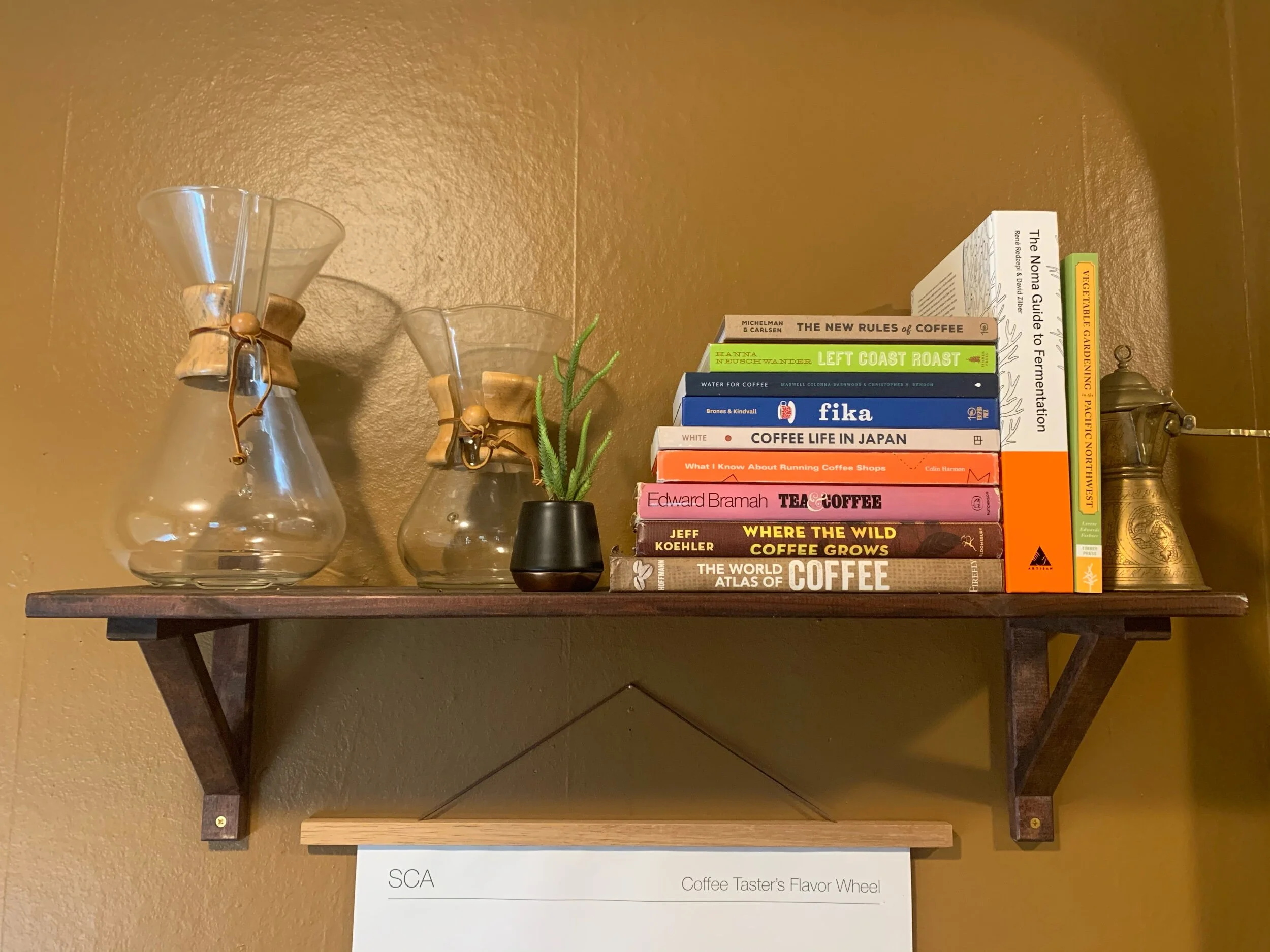Too Much: On Anaerobic Coffee
It’s typical for people who work in coffee to talk about their entrance into the industry by way of “conversion”. They had this undeniably transformative experience with a cup of coffee that expanded (or in some cases) blew apart their expectations for what coffee could taste like. Some people even refer to a particularly memorable espresso they had as a “God shot”. Religious commentary aside, I find it fascinating that often these experiences are with naturally-processed coffees, the widely maligned brother to the darling of specialty coffee, the clean and bright washed process. I myself had one of these very experiences more a than decade ago, my own “God shot”. I was in Santa Cruz, CA with some friends on a weekend trip and we stopped by Verve Coffee early one afternoon, and were met by a friendly and energetic barista named Jared Truby (now of Cat&Cloud Coffee) who suggested I get a shot of this natural coffee from a farm in Panama called “Elida Estate”. And my good Lord, was it eye-opening. I had no category for a coffee like this, so sweet and fruity, with a mouthfeel like someone melted a Jolly Rancher and put it in the demi cup. Over a decade later and I still distinctly remember this coffee, and the Lamastus’s Elida Estate coffee has become year over year my favorite coffee to this day. Naturally-processed coffees obviously have their flaws, even today when the process has improved dramatically over the last several year (particularly in Ethiopia where it’s become much more measured and streamlined), but that singular moment in coffee had defined my tastes up to this day.
So when I saw that Onyx Coffee Lab had procured a small lot from Elida Estate, I jumped on it. Theirs wasn’t a normal dry processed natural, but an “anaerobic” process, a feature that is gaining prominence and popularity today. I’ve had a few anaerobically-processed coffees in the past, and while not being wild about any of them it certainly didn’t dissuade me from trying a new version of my favorite coffee. I am what you would called and “adventurous” coffee drinker, and will go out of my way to try weird and wild coffees just for the sake of expanding my experience. From wild-grown Colombian coffees harvested by indigenous peoples to ferment-y lots from Laos, Cameroon, and Timor Leste, I relish the chance to try stuff most won’t touch. So I placed my order and waited patiently for this Panamanian gold to arrive. And now I sort of wish I hadn’t.
Fermentation tanks in Costa Rica.
Anaerobic-process coffees (also called “carbonic maceration” coffees) for those who don’t know, is a fairly new way to process the coffee after it’s been harvested. The flesh of the coffee cherry (sometimes called the “mucilage”) is removed and the seed of the cherry (the “coffee bean”) is placed in a fermentation tank and packed tightly as to remove any oxygen, hence the name “anaerobic”. Many producers are very secretive about their process for fear of being copied by their competitors and undersold, but some will add a mucilage gel at the top of the tank, and it’s suspected that other organic items are used as well (i.e. banana leaves and other flora). After around 18-24 hours, the anaerobic process has caused a breakdown in the mucilage and a huge buildup of CO2 pressure in the tank. This pressure forces the flavours of the juicy mucilage into the coffee parchment. Once carefully removed from the tank, the coffee is dried to ensuring a halting of the fermentation stage. This can produce intense flavors, and opinion varies about whether these are the intensification of the natural flavors of the coffee, or a result of the process.
Of the five or six coffees that I’ve had made with this process all of them had one thing in common: they possessed a dominating flavor which overwhelmed the natural essence. The most well-known of these comes from Costa Rican producer Luis Eduardo Campos from his farm Cordillera Del Fuego, which became famous for its heavy cinnamon profile. So strong was that flavor note that suspicion was that they were adding some other organic material to the fermentation tanks, which would violate Brewer’s Cup rules regarding the singularity of ingredients in the competition.
It’s not that I am against innovation, and I am certainly for what can give producers an edge in the market, but in my experience carbonic maceration leaves an indelible mark on the coffee, often times swallowing up the natural flavors and replacing it with the flavor of the process itself. With the aforementioned Elida Estate coffee I purchased from Onyx recently, I was hit each time with an extreme ferment-y fruit flavor that swallowed up all the nuance and clarity that this coffee normally has. Anaerobic coffees just become too much, and the subtleties, development, and clarity of what’s great about coffee. Like a lover of photography trying to take in everything that Instagram throws at them, these coffees lose their character in the sea of progress. I want to see coffee get better from seed to cup, but not by losing what naturally makes it great. I stand by a hallmark of of the specialty industry: coffee is great on its own, it doesn’t need anything else.
My friend Rena’s farm, Los Congos, in Nicaragua





